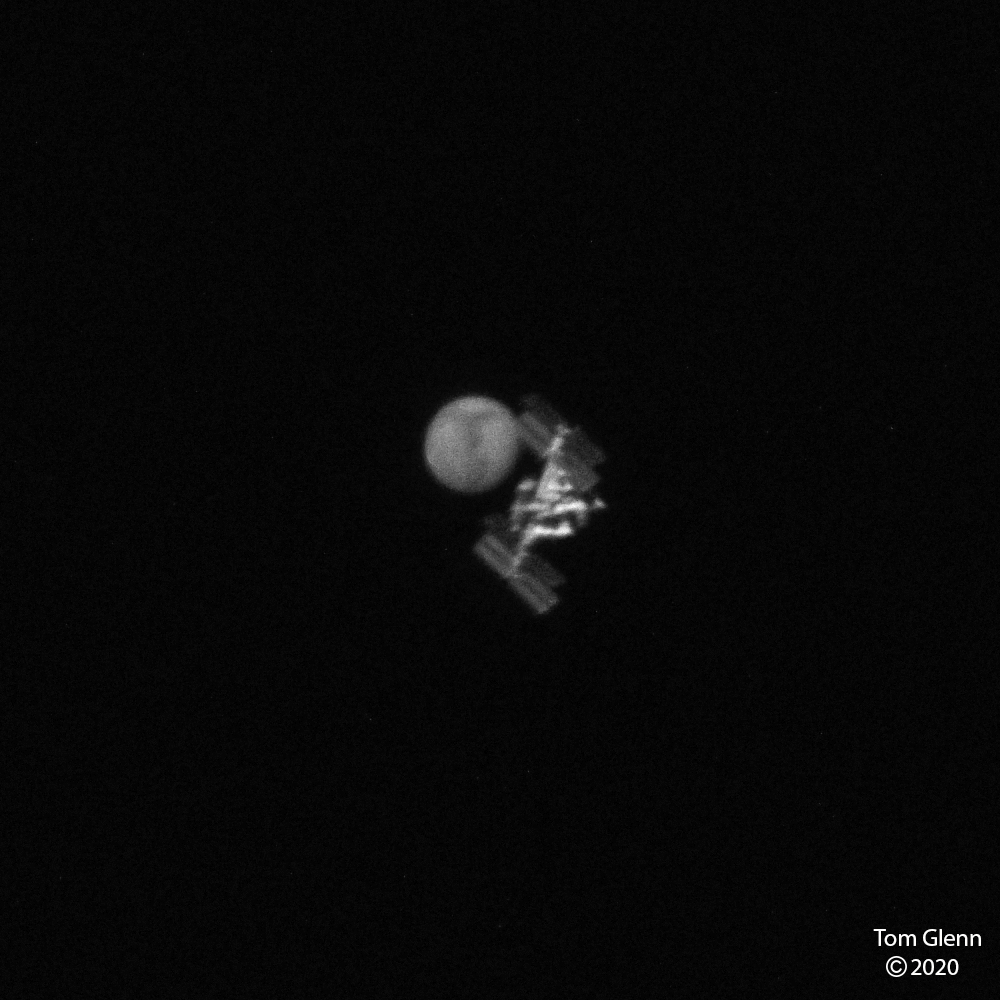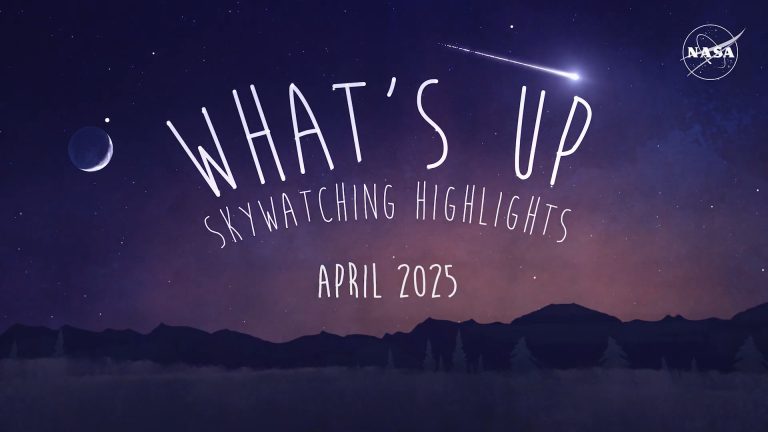2020年9月23日
ISS Transits Mars
Image Credit & Copyright: Tom Glenn
Explanation: Yes, but have you ever seen the space station do this? If you know when and where to look, watching the bright International Space Station (ISS) drift across your night sky is a fascinating sight — but not very unusual. Images of the ISS crossing in front of the half-degree Moon or Sun do exist, but are somewhat rare as they take planning, timing, and patience to acquire. Catching the ISS crossing in front of minuscule Mars, though, is on another level. Using online software, the featured photographer learned that the unusual transit would be visible only momentarily along a very narrow stretch of nearby land spanning just 90 meters. Within this stretch, the equivalent ground velocity of the passing ISS image would be a quick 7.4 kilometers per second. However, with a standard camera, a small telescope, an exact location to set up his equipment, an exact direction to point the telescope, and sub-millisecond timing — he created a video from which the featured 0.00035 second exposure was extracted. In the resulting image capture, details on both Mars and the ISS are visible simultaneously. The featured image was acquired last Monday at 05:15:47 local time from just northeast of San Diego, California, USA. Although typically much smaller, angularly, than the ISS, Mars is approaching its maximum angular size in the next few weeks, because the blue planet (Earth) is set to pass its closest to the red planet (Mars) in their respective orbits around the Sun.
Portal Universe: Random APOD Generator
Tomorrow’s picture: open space
国际太空站掩火星
影像提供与版权:Tom Glenn
说明:你看过国际太空站掩火星吗?如果你知道该在何时往那区域的天空看,观赏明亮的国际太空站掠过夜空,是一个有趣但还算寻常的景观。国际太空站凌越半度张角的月亮或太阳有影像记录,但相对罕见,因为要拍下这类影像,需要仔细规划、精确计时和不少耐心。要捕捉到国际太空站掠过小小的火星前方,其难度则更上一阶。拍下这幅主题影像的摄影者,从线上轨体得知这种罕见的凌星景观,只有在住所附近,一道宽只有90米的极窄区域内才得见。在这道带内,飞掠而过的国际太空站,相对地面移动的速度高达每秒7.4公里。不论如何,使用标准相机、小望远镜和在正确的位置架好所有设备,然后把望远镜指向正确的方向并以千分之一秒的精度计时,他拍下了记录这个过程的影片。而上面这张影像,就是其中一张曝光时间为0.00035秒的影格。这幅在这星期一当地时间05:15:47,摄于美国.加州圣地牙哥市东北隅的影格,同时清晰的呈现火星和国际太空站。张角通常远小于国际太空站的火星,在数星期内会运行到最大视张角的位置。届时,在绕行太阳的轨道上,地球会通过最靠近火星的位置,带来火星冲的天象。
宇宙的门户:随机APOD生成器
明日的图片:open space







